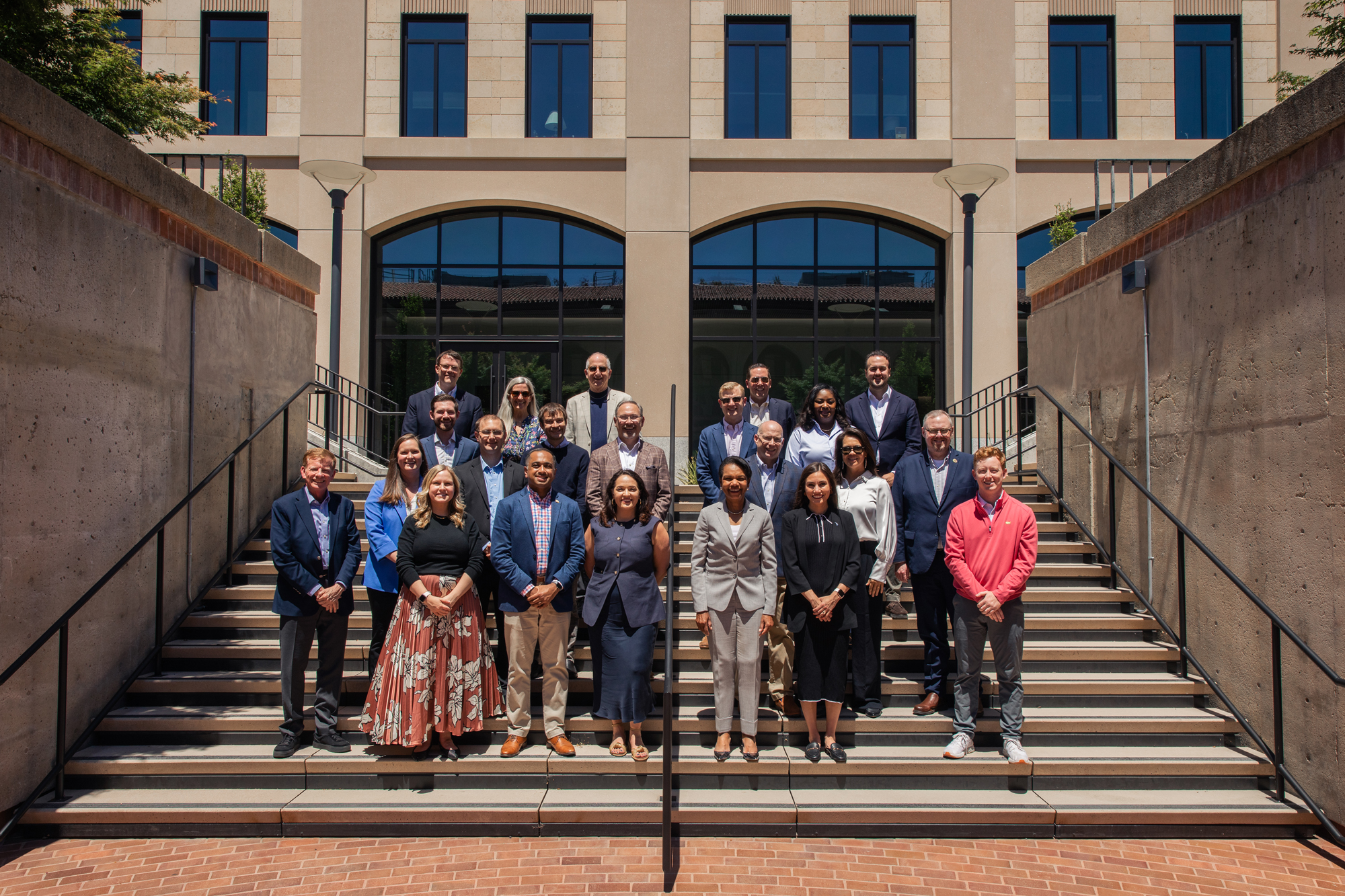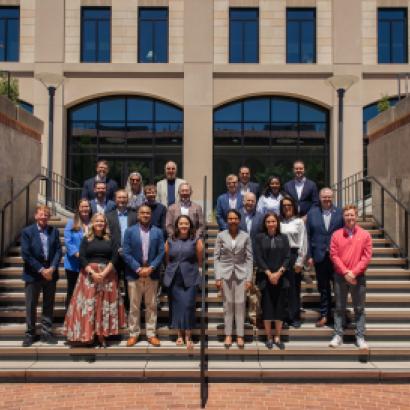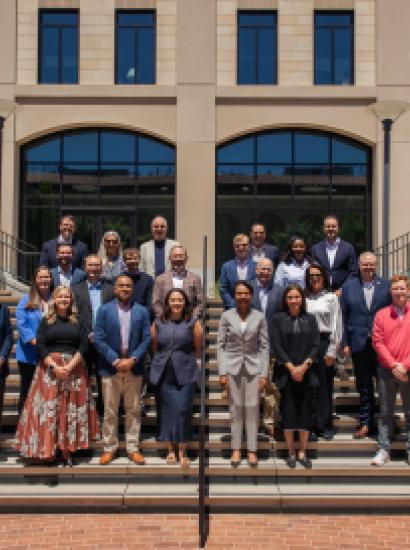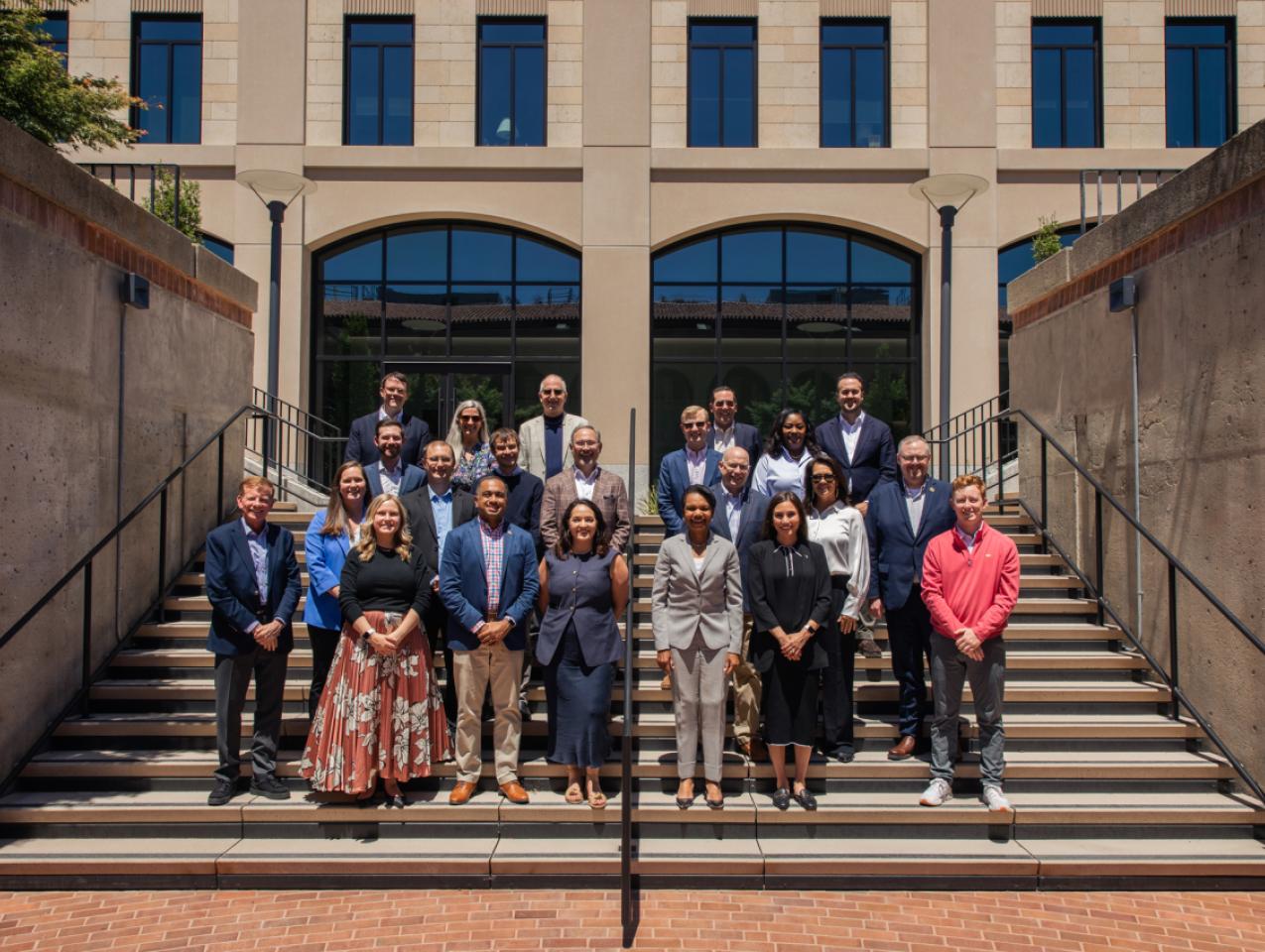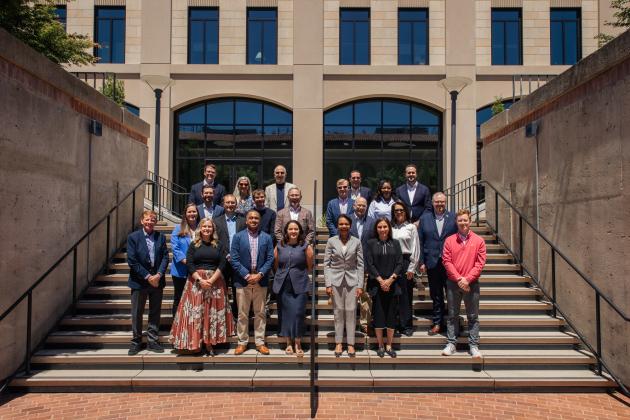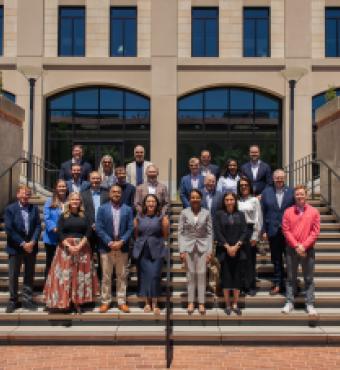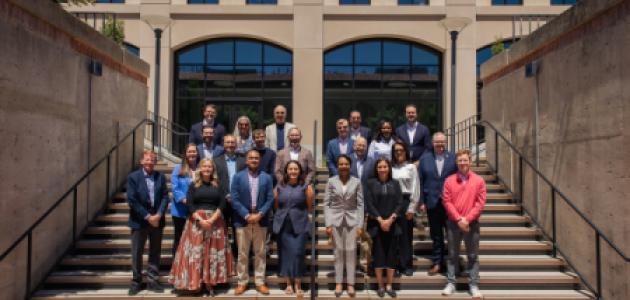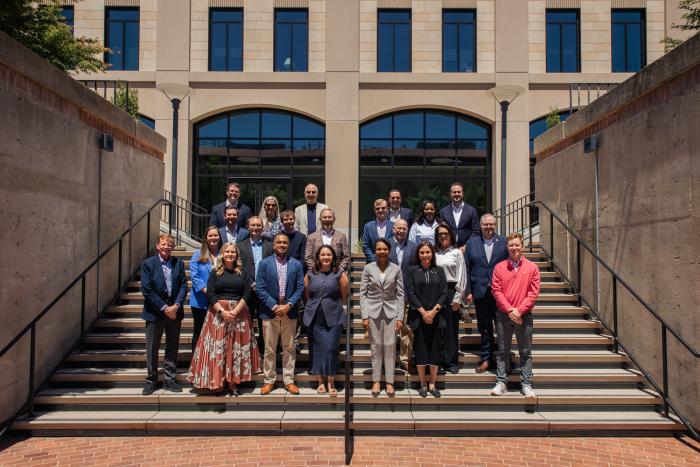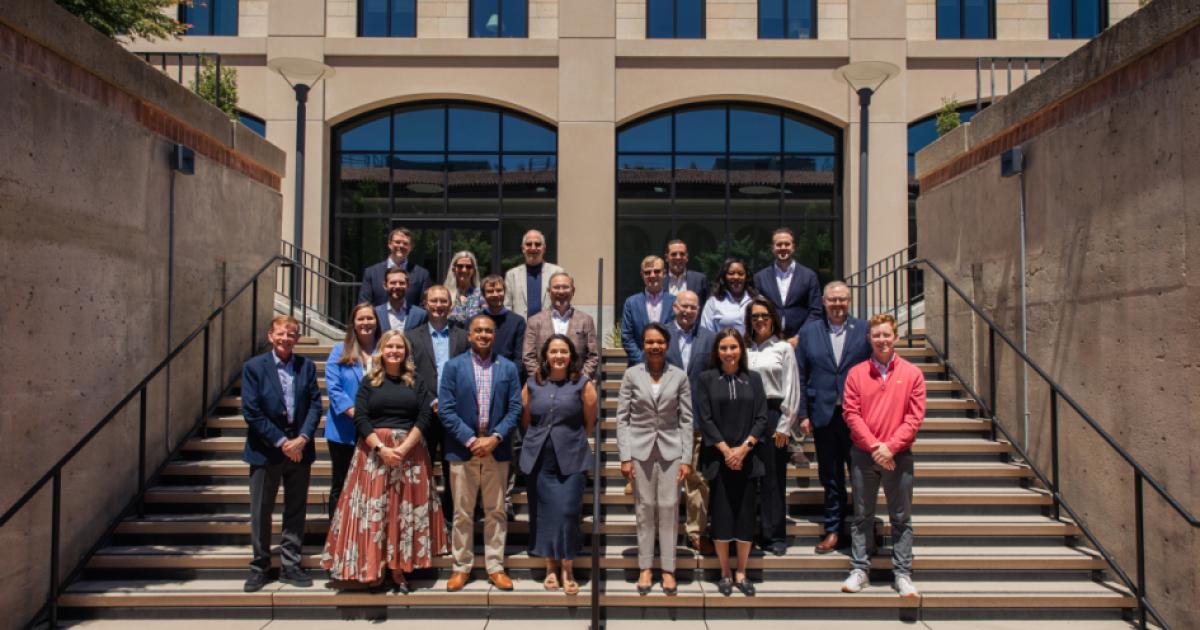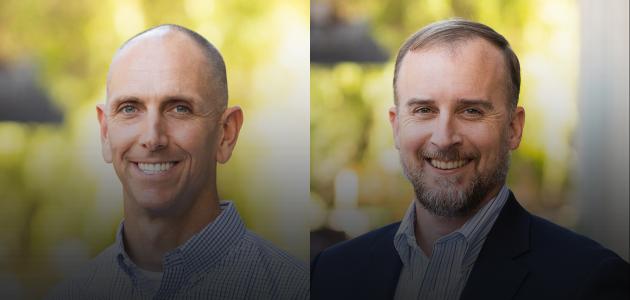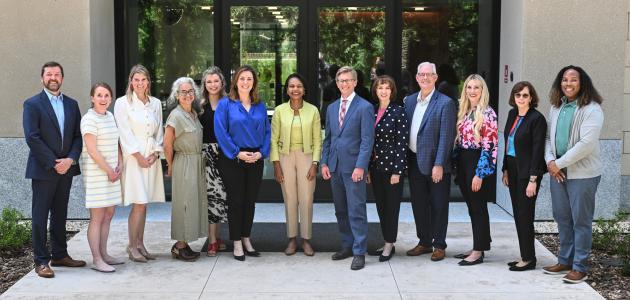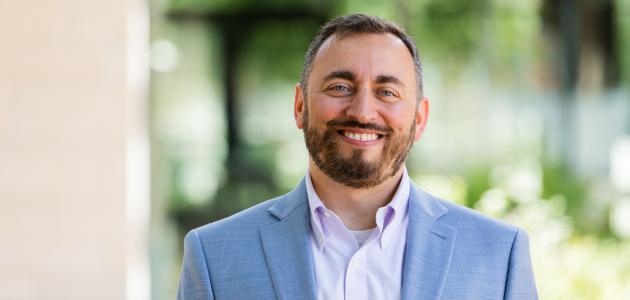In this edition of the Hoover Institution Briefing on Empowering State and Local Governance, a number of state officials visit Hoover to discuss best practices in fields such as education, economic development, and emerging technology. Patrick McLaughlin writes about research that indicates occupational licensing regimes in some states can reduce economic growth. And Valentin Bolotnyy and coauthors examine whether OBGYNs moved to more abortion-friendly states after the June 2022 Dobbs decision.
Featured Analysis

State Governors’ Officials Visit Hoover
A delegation of senior officials in the offices of US state governors visited Hoover in May to hear tailored briefings from Hoover experts as part of Hoover’s ongoing State and Local Leadership Forum. State governor’s office officials heard from Director Condoleezza Rice, experts on US-China relations, elections experts, researchers from the State and Local Governance Initiative, as well as prominent fellows such as Amy Zegart, John H. Cochrane and H.R. McMaster.
Read more here.

Dobbs Decision Did Not Prompt OBGYNs to Move: Study
In a new paper published in The Journal of the American Medical Association, Kleinheinz Fellow Valentin Bolotnyy and two coauthors examine whether the Supreme Court’s June 2022 Dobbs decision prompted obstetricians and gynecologists to move from jurisdictions where abortion has been banned or curtailed to locales where it is protected. Looking at the professional movements of 60,000 OBGYNs between January 2018 and September 2024, they find no evidence that doctors were leaving states with abortion restrictions for those without. “Although the Dobbs decision has increased physicians’ concerns about providing reproductive health care, there were no observed disproportionate changes in OBGYN practice location as of 2024,” they write. During their six-year study timeframe, Bolotnyy and his coauthors found that the number of OBGYNs increased by 8.3 percent in states where abortion is now banned, 10.5 percent in states where it is now threatened, and 7.7 percent in states where it is now protected after the Dobbs decision.
Read more here.

Occupational Licensing Stifles Economic Growth and Labor Market Equity
Writing in The San Diego Tribune, Research Fellow Patrick A. McLaughlin and Christos A. Makridis argue that California’s expansive array of professional licensing standards is impeding employment, especially for low- and middle-income wage earners. While licensing does improve wages for those who obtain accreditation, McLaughlin and Makridis found that the existence of a licensing regime leads to fewer jobs being available overall. “In our study, a 10 percent rise in these regulatory barriers caused a 2 percent increase in hourly wages, but a 4 percent drop in employment in those occupations. That’s not just a theoretical loss. It translates into fewer options for workers—particularly those hoping to enter a new field or move to another state in search of higher pay,” they write.
Read more here.

The Shifting Finance of Electricity Generation
In a new paper published by the National Bureau of Economic Research, State and Local Governance Initiative Director Joshua D. Rauh and Aleksandar Andonov of the University of Amsterdam examine the changing sources of financing behind new electricity generation development. Using a competing risk framework, they find that market deregulation significantly increases the likelihood of plant sales, particularly to private equity investors. Also, Rauh and Andonov find that carbon reduction imperatives drive many sales of generation capacity. Nuclear, falling water, and solar plants are less likely to be sold than other generation types such as coal or natural gas. They also explain that larger capacity generators are less likely to be sold, and older facilities are more likely to change hands. Finally, they explore factors that are driving the decommissioning of older facilities, finding that coal-fired power plants are more likely to be shut down than sold.
Read more here.
Interview

California Update: The World’s 4th-Largest Economy—and the Home of “Shaq State”?
New data points to California as the world’s fourth-largest economy, supplanting Japan. What does that say about California as an economic powerhouse and a nation-state plagued by high costs of living? Hoover Senior Fellow Lee Ohanian and Distinguished Policy Fellow Bill Whalen, both contributors to Hoover’s California on Your Mind web channel, discuss California’s new global standing, the impact of Trump’s looming tariffs, and the reemergence of former Vice President Kamala Harris as she ponders whether to run for governor in 2026. The panelists also consider political intrigues past, present, and future in Los Angeles, the ongoing struggles of California’s high-speed rail project, and basketball great Shaquille O’Neal’s becoming the general manager of Sacramento State’s men’s basketball team—leaving the hosts wondering whether state government likewise could benefit from a star athlete’s intervention.
Watch or listen here.
Also Featuring

Wildfires are California’s “Public Enemy Number One.” State and Local Government Should Do Much More to Protect Us
Writing in the aftermath of the deadly 2025 Los Angeles wildfires, which claimed 30 lives and cost upwards of $250 billion worth of property damage, Senior Fellow Lee Ohanian outlines what needs to change in California’s wildfire response. First, Ohanian argues environmental movements that block prescribed burns and forest thinning are now causing more harm than good in the state. “Some of the environmental blocking of fire safety policies is difficult to reconcile with common sense governance,” he writes. Further, he asserts that authorities also need to employ early-warning systems such as ALERTCalifornia, which can detect fires well before the first 911 calls come in. Finally, Ohanian points out the amount of carbon emitted by the forest fires that burn in just one season in California can exceed or even double the amount of carbon saved by the state’s myriad of emission reduction programs.
Read more here.
For more insight on important state and local issues visit www.hoover.org/focus-areas/empowering-state-and-local-governance







